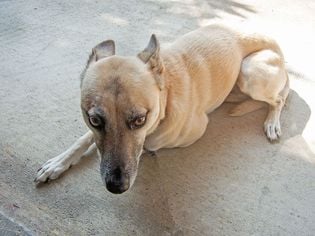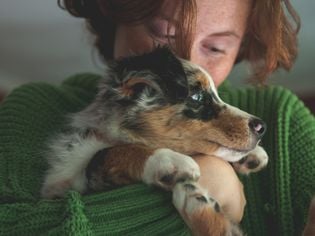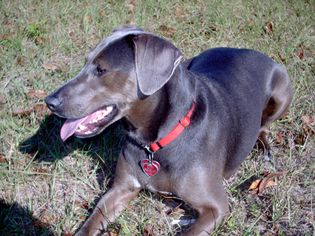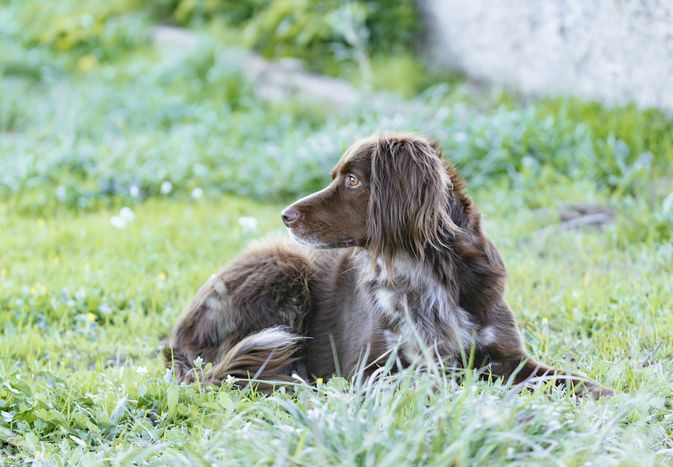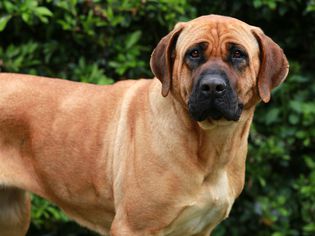The Labradoodle is a cross between a Labrador retriever and a standard or miniature poodle that was originally developed in Australia. Labradoodles are one of the most popular dog breeds in the United States—and for good reason. These canines are happy-go-lucky, intelligent, and friendly. Known for their shaggy coats, floppy ears, and sweet smiles, Labradoodles are beloved for their teddy bear-like appearance and demeanor.
We spoke with a vet and a professional dog trainer to learn more about the Labradoodle, including the breed’s history, temperament, health concerns, and care needs.
Meet the Expert
Bethany Hsia, DVM, is the co-founder of CodaPet.
Russell Hartstein is a certified dog behaviorist and trainer in Los Angeles and founder of Fun Paw Care.
Breed Overview
GROUP: Hybrid
HEIGHT: Standard: 21 to 24 inches; medium: 17 to 20 inches; miniature: 14 to 16 inches
WEIGHT: Standard: 50 to 75 pounds; medium: 26 to 45 pounds; miniature: 18 to 28 pounds
COAT: Variable; medium to long with a curly, straight, or wavy coat
COAT COLOR: Black, chocolate, cream, gold, red, white, yellow
LIFE SPAN: Variable; generally 12 to 16 years
TEMPERAMENT: Friendly, gentle, intelligent, loyal, playful
HYPOALLERGENIC: Yes, to a degree
ORIGIN: Australia
Characteristics of the Labradoodle
Outgoing, playful, and devoted, Labradoodles have loving personalities that make them excellent additions to the family, as they get along with all people and pets alike. They thrive with companionship and want to be around their loved ones.
And as bright and athletic as they are, you can count on them to be up for adventures, no matter how big or small. Daily exercise and enrichment are a must for Labradoodles to be at their best.
There are three different generations of Labradoodles, including:
- F1: 50 percent Labrador, 50 percent poodle
- F1b: 75 percent poodle, 25 percent Lab
- F2: 87 percent poodle, 13 percent Lab
Depending on the generation, Labradoodles can vary in temperament and coat. Some can be a good choice for people with allergies who are looking for a low-shedding dog compared to other breeds. However, it’s important to note that no dog breed is truly hypoallergenic.
Note that Labradoodles are different from Australian Labradoodles, as Labradoodles are part Labrador retriever and poodle, whereas Australian Labradoodles are part Labrador retriever, poodle, and cocker spaniel.
| Affection Level | High |
| Friendliness | High |
| Kid-Friendly | High |
| Pet-Friendly | High |
| Exercise Needs | High |
| Playfulness | High |
| Energy Level | High |
| Trainability | High |
| Intelligence | High |
| Tendency to Bark | Medium |
| Amount of Shedding | Low |
History of the Labradoodle
Wally Conron, an Australian dog breeder and trainer who worked for the Royal Guide Dogs Association of Australia, created the Labradoodle in the 1980s. A blind woman in Hawaii reached out to Conron asking if he could develop a hypoallergenic guide dog, as her husband was allergic to long-haired dogs.
After three years of solely working with standard poodles, Conron thought to breed a Lab and poodle, resulting in the first Labradoodle litter in 1989. One of the three pups, Sultan, became the world’s first Labradoodle guide dog.
From that point forward, the Labradoodle skyrocketed in popularity all around the world for its adorable appearance, friendly nature, and low-shedding coat throughout the 1990s and early 2000s. It remains one of the most recognized crossbreeds today.
Labradoodle Care
No one Labradoodle is the same considering the variance in their genes. For example, some may have curly coats, and others, wavy or even flat coats. The same applies to their temperament. Regardless of the generation of Labradoodle, they all need sufficient exercise, mental stimulation, and grooming.
Exercise
Labradoodles are a high-energy breed that requires regular exercise to stay healthy and happy, says Bethany Hsia, DVM. She adds that Labradoodles need around 30–60 minutes of exercise per day, which can include activities like brisk walks, jogging, playing fetch, or engaging in interactive games.
An active and bright breed, this breed loves putting their mind to the test. Hsia recommends incorporating puzzle toys, obedience training, or agility courses in their daily routines to help keep them mentally sharp and prevent boredom.
Other activities Hsia recommends for Labradoodles include:
- Swimming
- Hiking
- Dog sports (e.g. agility or flyball)
- Playtime with other dogs (for physical exercise, socialization, and mental enrichment)
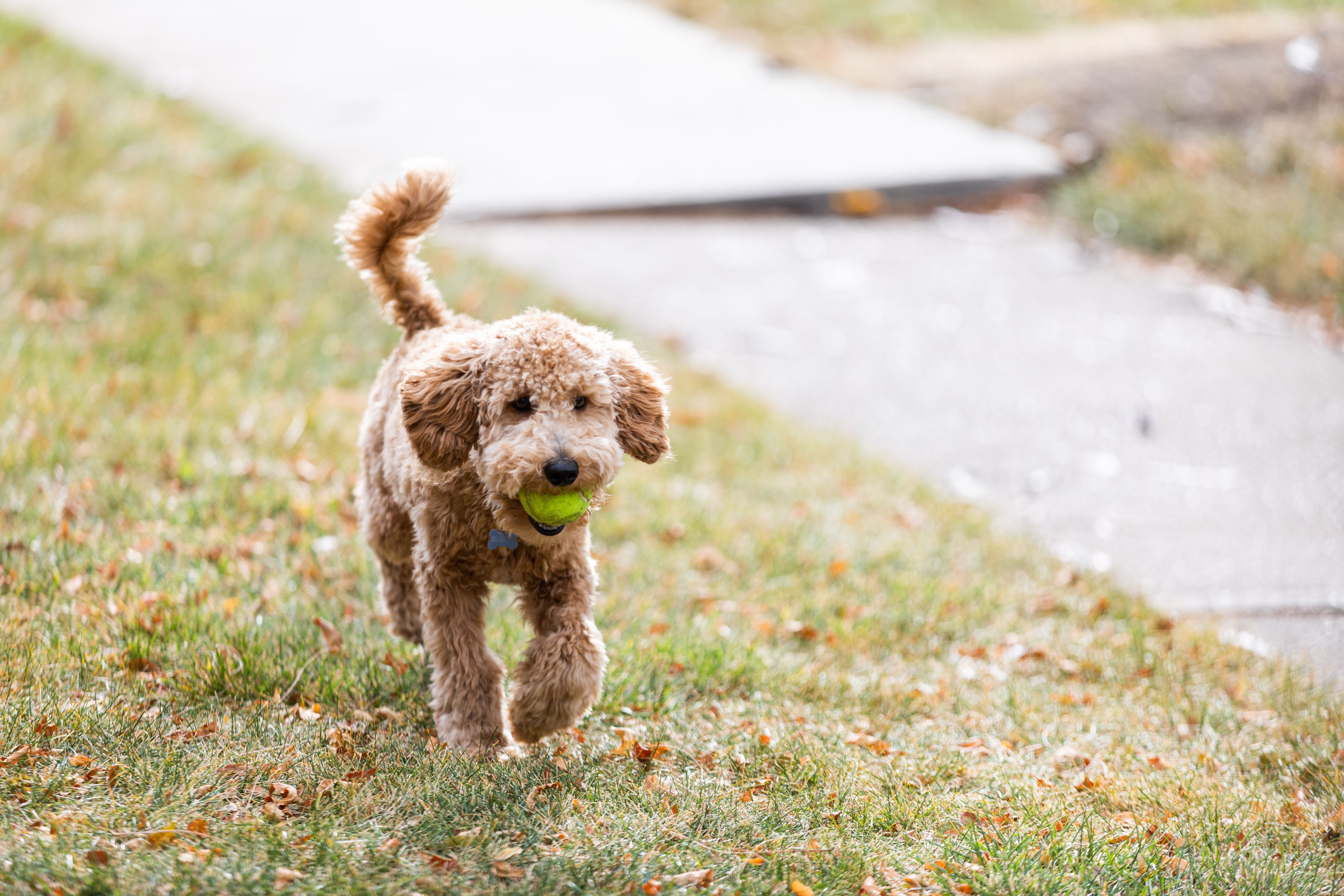
Brett Taylor / Getty Images
Grooming
As a hybrid breed, Hsia says Labradoodle coats can vary in texture and length. Although they’re considered to be low-shedding dogs, they require lots of grooming to prevent mats and keep their coats healthy overall. They should typically be brushed at least 2–3 times a week to remove loose fur and prevent tangles, she adds.
Labradoodles require professional grooming approximately every two months to trim their coat and keep it tidy. Their grooming needs can also change with the seasons.
“During shedding seasons, more frequent brushing may be necessary to manage loose fur,” Hsia says. “In colder winter months, some owners opt to leave their coat longer for added warmth.”
Additionally, Labradoodles should also have their nails trimmed monthly, ears checked weekly, and teeth brushed regularly.
Training
“Labradoodles are generally energetic, food motivated, and intelligent, which are qualities that typically make up a dog that is easier to train,” says Russell Hartstein, a certified dog behaviorist and trainer. “However, as with all canines, we have to work with the unique individual in front of us, as generalizations don't hold true for many individuals.”
When training a Labradoodle, Hartstein says positive reinforcement dog training is the gold standard for training any dog, making sure to use both operant and classical conditioning. Provide plenty of praise, pets, and treats to encourage positive behaviors.
Hartstein recommends training a Labradoodle as soon as possible. Training our canine companions early on allows them to develop good, lifelong habits. Not to mention, it’s also a great way to bond with them.
Hartstein also says a dog should be trained by an ethical breeder beginning at birth, which includes handling, gentling, husbandry, and being conditioned and exposed to many of life’s stimuli.
Common Health Problems
Labradoodles are generally healthy dogs, Hsia says. But as with any breed, there may be genetic health issues pet parents should look out for.
Considering Labradoodles are a hybrid breed, they may be predisposed to health problems that are common in either Labs or poodles. Hsia says these may include:
- Hip dysplasia: Labradoodles can be more prone to hip dysplasia, a genetic condition that affects the hip joints’ development.
- Progressive retinal atrophy (PRA): This inherited eye disorder can lead to vision loss over time.
- Ear infections: Due to their floppy ears, Labradoodles are slightly more susceptible to ear infections compared to other dog breeds if their ears aren’t kept clean and dry.
“Regular veterinary check-ups and maintaining a healthy diet and exercise routine can help prevent these issues or catch them early if they arise,” Hsia says.
Diet and Nutrition
“Labradoodles should be fed a balanced diet that meets their nutritional requirements based on factors like age, size, activity level, and health status,” Hsia says.
Generally, adult Labradoodles should eat twice a day. Puppies may eat at least three meals a day. However, the number of daily meals can vary depending on your dog’s individual needs.
When choosing food for your Labradoodle, Hsia suggests opting for high-quality dog food that lists meat as the first ingredient and avoids fillers, such as corn or by-products. For specific recommendations, it’s always best to consult your veterinarian so they can provide options tailored to your furry friend.
It’s best to ensure treats make up no more than 10 percent of your dog’s daily diet to prevent unwanted weight gain and keep your doodle happy and healthy.
Fresh, clean water should always be available for your Labradoodle.
Where to Adopt or Buy a Labradoodle
Check with your animal shelter or rescue group to see if there are any Labradoodles available for adoption—you can also find Labradoodle-specific rescue groups.
If you’re looking to purchase a Labradoodle, you’ll want to research ethical and responsible breeders who promote the health and well-being of the breed. The average cost of a Labradoodle can range anywhere from $1,500 to $3,000 and more depending on their size, color, and lineage.
For more information to help you find a Labradoodle, check out:
- Australian Labradoodle Association of America
- IDOG Rescue, Inc. (Doodle rescue group)
Labradoodle Overview
Labradoodles are wonderful companions that bring the best of both worlds of the Labrador retriever and poodle. They’re social, smart, and sweet, but they do require regular exercise, enrichment, and grooming.
Pros of the Labradoodle
- Good with kids and other pets
- Playful and affectionate
- Intelligent and generally easy to train
Cons of the Labradoodle
- Requires frequent grooming
- May easily become bored without mental stimulation
- Needs at least 30 minutes to an hour of daily exercise
More Dog Breeds and Further Research
Make sure to research the Labradoodle to learn if they’re compatible with your lifestyle and are the right breed for you. Due to their high popularity, it’s important to look for reputable and responsible breeders. Talk with Labradoodle owners, reputable breeders, rescue groups, and veterinary professionals to learn more about the breed.
If you’re interested in similar breeds, check out:
- Goldendoodle (groodle)
- Labrador retriever
- Poodle
There’s a whole world of potential dog breeds out there—with a little research, you can find the right one to bring home.
- Is a Labradoodle a high-maintenance dog?
Yes, Labradoodles are considered to be high-maintenance dogs due to their exercise, enrichment, and grooming needs. Considering their high energy and intelligence, Labradoodles tend to require more daily physical activity and mental stimulation, as well as routine grooming, compared to other breeds.
Do Labradoodles shed a lot?While this depends on the generation of Labradoodle, this breed is widely known and sought out for their low-shedding coat compared to most other breeds.
Is a Labradoodle a good house dog?Labradoodles are great house dogs, as they’re both friendly and adaptable to just about any living situation.

